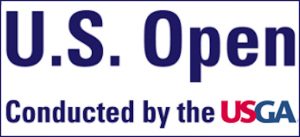Jun
A Look at the U.S. Open
 In the highly inexact science of trying to predict the winner of a professional golf tournament, you can come at it from one or more of several angles. Go with the highest-rated player in the field, the player with the best recent results, the player with the best record in the given event, or the player who appears to have the best fit for the course. There are many additional perspectives. Take your pick.
In the highly inexact science of trying to predict the winner of a professional golf tournament, you can come at it from one or more of several angles. Go with the highest-rated player in the field, the player with the best recent results, the player with the best record in the given event, or the player who appears to have the best fit for the course. There are many additional perspectives. Take your pick.
When the event is the U.S. Open, which is being played this weekend at Pebble Beach Golf Links, it only gets tougher. For instance, and kind of arranging these from the more near-term views to the more long-term, you could line them up like this:
Top three players based on results in their last four appearances – Patrick Cantlay, Shane Lowry, Jordan Spieth.
Top three players whose skill sets fit Pebble Beach – Shane Lowry, Justin Harding, Si Woo Kim.
Last three players to win a major – Brooks Koepka, Tiger Woods, Brooks Koepka.
Top three players in the Official World Golf Ratings – Brooks Koepka, Dustin Johnson, Rory McIlroy.
Top three players in the Hawley Ratings – Dustin Johnson, Rory McIlroy, Patrick Cantlay.
Last three winners of the Pebble Beach Pro-Am – Phil Mickelson, Ted Potter, Jordan Spieth. (Well, maybe not Ted, who did not qualify for this year’s Open.)
Top three players based on median earnings in the U.S. Open over the last four years – Brooks Koepka, Dustin Johnson, Tommy Fleetwood.
Top three players based on record in the U.S. Open over the last eight years – Dustin Johnson, Brooks Koepka, Jason Day.
We could go on and on like this. The computer usually picks the highest-rated player, i.e. Dustin Johnson, so we’ll go with him. Well, or maybe Rory McIlroy.
Johnson has been up and down this year, although never worse than 45th (perhaps notably, that came in the AT&T Pebble Beach back in February). He was runner-up in both prior majors this season among six top-10s, all since the last visit to the Monterrey Peninsula.
It was noted in this space last week that McIlroy has a fabulous year going (nine top-10s, including seven in a row from January to March). Then he topped that with a seven-stroke victory in the Canadian Open on Sunday, his second win of the season.
Among other highlighted players:
Cantlay missed the cut at the Zurich but in the other three of his last four appearances he has been no worse than third. He won the Memorial two weeks back.
Koepka, of course, has won three of the last five majors and was in the top 10 of the other two. It doesn’t quite fit that he has been mediocre in his other eight appearances in 2019, back in the pack six times including a missed cut at the Palmer.
Spieth, who at one point had fallen far off the form that got him up to no. 2 in the Hawley Ratings in 2015, seems to have regained the touch. He is in the top two percent in putting (putts per GIR) among all PGA and Euro Tour players, and in the top 10 percent in shots gained putting. He comes into the Open with three straight top-10s, including a third at the PGA.
For decades there has been a recognition that U.S. Open courses are set up with long rough and fast greens. More recently there has been more focused discussion about how the U.S. Golf Assn., ruling body of amateur golf in the U.S., addresses the latter issue, the greens. This spring an anonymous former major winner told golfdigest.com, “There’s (an) ambition to get the greens as fast as possible. It’s no wonder the longest rounds of the year are at the U.S. Open, because you can’t go tap in a two-footer. You have to mark it, and you have to be careful and take your time and concentrate.”
One of the keys to this discussion is that the course will play differently after the USGA has set it up for the Open than it will in other scenarios. For Open courses over the last eight years, by far the top statistic in correlation with success is driving distance, with putting a distant second. As noted above, per the Hawley course fit statistics, Lowry, Harding, and Kim are the three players whose stats performance best matches the success stats. Aaron Baddeley and Webb Simpson are right there too. A lower-ranked guy who might like Pebble Beach is Brian Stuard.
Another angle, a couple of other guys whose rating numbers are on the rise include Jason Dufner and Martin Kaymer.
There is a boat full of guys who come into this event playing short of their personal standards. Just limiting this to guys in the top 25 in the ratings, and starting with those playing the worst, the names include Bryson DeChambeau, Tony Finau, Louis Oosthuizen, Day, and Francisco Molinari. Mickelson would be included but he’s ranked 26th.
